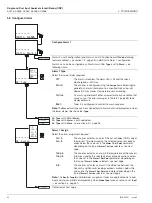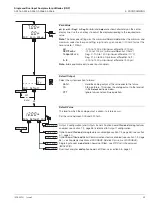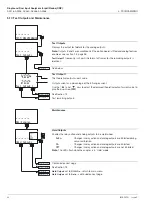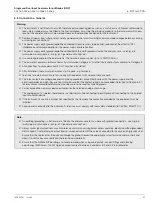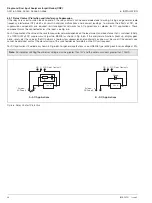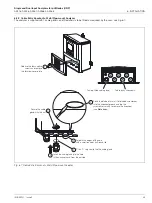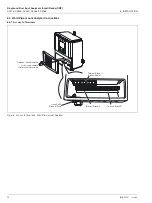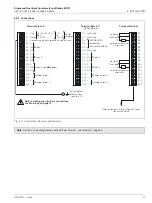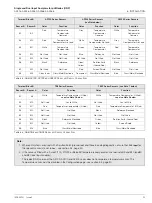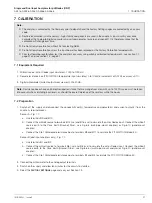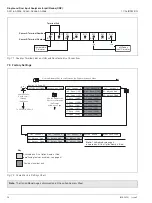
Single and Dual Input Analyzers for pH/Redox (ORP)
AX416, AX436, AX460, AX466 & AX468
6 INSTALLATION
IM/AX4PH
Issue 9
47
6.3 Connections, General
Warning.
The instrument is not fitted with a switch therefore a disconnecting device such as a switch or circuit breaker conforming to
local safety standards must be fitted to the final installation. It must be fitted in close proximity to the instrument within easy
reach of the operator and must be marked clearly as the disconnection device for the instrument.
Remove all power from supply, relay and any powered control circuits and high common mode voltages before accessing
or making any connections.
The power supply earth (ground)
must
be connected to ensure safety to personnel, reduction of the effects of RFI
interference and correct operation of the power supply interference filter.
The power supply earth (ground)
must
be connected to the earth (ground) stud on the analyzer case - see Fig. 6.8
(wall-/pipe-mount analyzers) or Fig. 6.10 (panel-mount analyzers).
Use cable appropriate for the load currents. The terminals accept cables up to 14AWG (2.5mm
2
).
The instrument conforms to Mains Power Input Insulation Category III. All other inputs and outputs conform to Category II.
All connections to secondary circuits must have basic insulation.
After installation, there must be no access to live parts, e.g. terminals.
Terminals for external circuits are for use only with equipment with no accessible live parts.
The relay contacts are voltage-free and must be appropriately connected in series with the power supply and the
alarm/control device which they are to actuate. Ensure that the contact rating is not exceeded. Refer also to Section 6.3.1
for relay contact protection details when the relays are to be used for switching loads.
Do not exceed the maximum load specification for the selected analog output range.
The analog output is isolated, therefore the -ve terminal must be connected to earth (ground) if connecting to the isolated
input of another device.
If the instrument is used in a manner not specified by the Company, the protection provided by the equipment may be
impaired.
All equipment connected to the instrument's terminals must comply with local safety standards (IEC 60950, EN61010-1).
Note.
An earthing (grounding) - stud terminal is fitted to the analyzer case for bus-bar earth (ground) connection - see Fig. 6.8
(wall-/pipe-mount analyzers) or Fig. 6.10 (panel-mount analyzers).
Always route signal output/sensor cell cable leads and mains-carrying/relay cables separately, ideally in earthed (grounded)
metal conduit. Use twisted pair output leads or screened cable with the screen connected to the case earth (ground) stud.
Ensure that the cables enter the analyzer through the glands nearest the appropriate screw terminals and are short and
direct. Do not tuck excess cable into the terminal compartment.
Ensure that the NEMA4X/IP66 rating is not compromised when using cable glands, conduit fittings and blanking
plugs/bungs (M20 holes). The M20 glands accept cable of between 5 and 9mm (0.2 and 0.35 in.) diameter.


